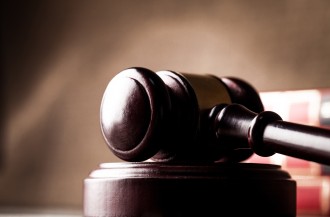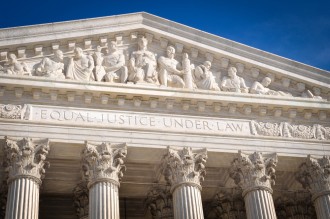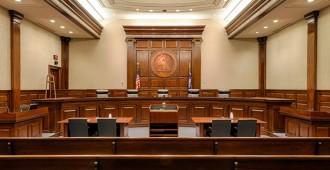
April 24, 2018
IPRs Are Here to Stay, But Partial Institution Decisions Are a Thing of the Past
It is a big day at the Supreme Court for patent law and, in particular, Inter Partes Reviews. In the first of two decisions, the Court has ruled that IPRs are constitutional, casting aside a challenge to the very existence of the proceeding. Oil States Energy Services, LLC v. Greene’s Energy Grp., LLC, No. 16-712 (April 24, 2018).
In the second decision, the Court has overruled the PTAB’s regulation and practice that allowed it to issue partial institution decisions, sending only some claims, but not necessarily all, when instituting an IPR trial. SAS Institute Inc. v. Iancu, No. 16-969 (April 24, 2018). This post addresses the Oil States decision, with a subsequent blog post HERE to discuss SAS Institute.
In Oil States, Justice Thomas wrote the opinion for the Majority, with Justice Gorsuch writing a dissent to which Justice Roberts joined. In general, the majority found that IPR is simply the government’s reconsideration of its earlier decision to grant a public franchise. Indeed, there was no dispute about the fact that the decision to grant a patent is a matter involving public rights. Since IPR is just an offshoot of that original grant, namely the reconsideration of that grant, IPR is also a matter involving public rights. Thus, except for an academic stroll through 200+ years of jurisprudence, there is not much practical information in the majority’s opinion.
It is notable, however, that the majority expressly states that its holding is a narrow one. For example, the Court states that it has not: 1) considered whether infringement actions can be heard in a non-Article III form, 2) considered whether retroactive application of IPR is inappropriate, or 3) suggested that patents are not property for purposes of the Due Process Clause or the Takings Clause. Id. at 16-17.
Given some of the issues raised during oral argument, including “stacking” of Board panels, etc., it may be considered surprising for some that the Court did not offer at least some hints as to the future of IPR. Instead, some of those hints were relegated to the Gorsuch dissent. Citing the strong need for an independent judiciary to hear cases of this nature, the dissent paints a biased picture of IPR proceedings.
For example, the dissent points out that the proceedings are:
- Overseen by a Director who serves at the pleasure of the President
- The Director oversees and pays Board members
- The Director selects which members, and how many, hear a particular challenge
- If the Board members come to a conclusion that the Director does not like, the Director can add more members and order the case reheard (citing Nidec Motor Corp.)
In short, the dissent characterizes IPR proceedings as a retreat from the promise of judicial independence — the type of independence that is immune from “[p]owerful interests … capable of amassing armies of lobbyists and lawyers to influence (and even capture) politically accountable bureaucracies.” Id. at 3.
In the end, the dissent sounded a warning to the relinquishment of judicial authority to the other government branches:
Ceding to the political branches ground [the Article III Courts] wish to take in the name of efficient government may seem like an act of judicial restraint. But enforcing Article III isn’t about protecting judicial authority for its own sake. It’s about ensuring the people today and tomorrow enjoy no fewer rights against government intrusion than those who came before.




































